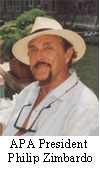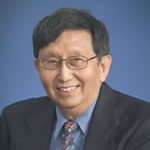Anything could happen when synergism occurs. In bedrooms and boardrooms, from sport’s arenas to battlefields, on factory floors as well as on capital hills, synergy is the key to optimal performance.
There is an ancient Chinese saying to the effect that success depends on a combination of providential timing, natural advantages and harmonious teamwork. In short, when heaven, earth and people work in concert,dreams come true and miracles take place.
We have just entered the playoff season for the NHL and NBA. The excitement of playoff games is that an eighth seeded team could knock off the first seeded defending champion. Synergy is a big factor in these upset victories, whenever they occur.
In the business world, teamwork is one of the buzzwords among today’s management gurus. There is increasing evidence that teamwork does not always work. However, when it does work, it releases creative energies and achieves amazing results. That’s why so many executive coaches specialize in developing the synergic potential of teamwork.
 In a recent issue of Psychological Monitor, APA President Philip Zimbardo talked about the benefits of nurturing psychological synergies. The combination of teaching, research and life has been responsible for some of his most well known discoveries, such as his Stanford Prison Experiment.
In a recent issue of Psychological Monitor, APA President Philip Zimbardo talked about the benefits of nurturing psychological synergies. The combination of teaching, research and life has been responsible for some of his most well known discoveries, such as his Stanford Prison Experiment.
Psychological synergies can also benefit clinicians when they combine practice with research and life experiences. Some of the most influential clinical psychologists, such as Donald Meichenbaum, have done groundbreaking research, which provides the empirical basis for their practice of psychotherapy.
The emerging interest in the integration of spirituality and science (e.g., Templeton Foundation) is yet another example of the human potential of synergy. Harold Koenig has documented the wide range of benefits of combining spirituality and religion with medical practices.
Given the enormous practical importance of synergy in almost every human domain, why has there has been so little psychological research on this subject? Why is it that even positive psychologists have not taken it seriously?
The psychology of synergy seems to be based on the Kurt Koffka’s Gestalt principle that the whole is more than the sum of its parts. It also is related to Kurt Lewin’s field theory. These observations shed some light on the neglect of this important topic.
In the last fifty years, mainstream psychology has been dominated by psychologists steeped in the tradition of logical positivism and natural sciences. Unfortunately, most psychologists are still stuck the mindset of Newtonian physics, when our colleagues in physics have moved beyond relativity theory and quantum theory towards a unified field theory.
It seems to me that nothing short of a fundamental paradigm shift could create a scientific climate conducive to research on psychological synergies. We need to switch from modernity’s binary reasoning to post-modernity’s paradoxical thinking. We also need to develop a human science, which resembles an open, dynamic system.
I have always maintained that a truly positive psychology capable of enhancing optimal performance in individuals and organizations around the globe needs to be integrative, holistic and cross-cultural, embracing a variety of concepts and methodologies. Perhaps, there is a need for an overarching theory, which incorporates principles of Gestalt psychology, field theory, and humanistic-existential psychology. Without such an open-minded approach, many topics vital to human existence, such as synergy, will continue to be ignored.
At the core of human existence, all creative processes probably stem from the same source: sexuality and spirituality, arts and science, the quests for beauty, goodness and truth may all be connected in some way. Synergy has to do with taping into the human potential at its deepest level.
Although not much is known about the phenomenon of synergy, I venture to suggest several relevant aspects as a possible roadmap for research:
- One of the essential preconditions is a deep commitment to cooperation and integration.
- There needs to be an ongoing genuine dialogue among participants.
- We need to cultivate a generosity of spirit in which self-agenda becomes replaced by a shared vision.
- There is a gradual loss of “self” in the engagement, similar to the experience of the Csikszentmihalyi’s flow experience. It may be called the collective flow experience in the case of teamwork.
- There is a profound awareness of unity and harmony, resembling Maslow’s concept of peak experiences.
- There is a heightened sensitivity and empathy towards others to avoid unnecessary misunderstanding and maximize morale.
- There is a well-developed double-vision — with one eye focusing on one’s own task, and another eye attending to the opportunities arising in the larger “life field”. This similar to the constant interplay between figure and ground in Gestalt psychology.
- There is complete openness to new ideas and “out-of-the-box” imagination.
- There is willingness and courage to take risks.
Michael Jordan and Wayne Gretzky seem to have possessed many of the above characteristics. Could that be one of the reasons for their unusual accomplishments? In psychology, William James and Carl Jung also seem to fit the bill. Their enduring influence in spite of the changing fads and fashions in psychology may be due to their personal experience of psychological synergies. I believe that we can learn from these superstars about how synergy works. More importantly, I hope that this article will stimulate a lot of research interest in the positive psychology of synergy.


 Meaning Conference 2025 will be the INPM’s first in-person conference with a virtual option after the pandemic.
Meaning Conference 2025 will be the INPM’s first in-person conference with a virtual option after the pandemic.